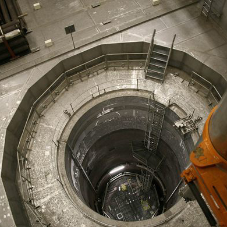Make sure you specify the correct rooflights for your requirements with our checklist:
☐ Choose size and shape. Measure your roofspace and internal ceiling to get a grasp on the size and shape required.
☐ Specify the glazing type. All overhead glass must be safety glass either: toughened, laminated or wired. The most popular being toughened or laminated glass. Toughened glass is strong without being too thick, if it does break it shatters in to small pieces to avoid injury. Laminated glass combines two or more sheets of float glass with one or more interlayers, if it should break glass is held together by its interlayers.
☐ Decide on glazing colour. Clear glazing lets in the most daylight and provides clean, clear views, though potential glare must be considered. A diffused glazing can maximise privacy and diffuse light transmission but obstructs views, as would an opalescent glazing. Bronze glazing reduces solar heat gain but reduces light transmission.
☐ Consider thermal performance needs. The upper limit for heat transfer through rooflights in domestic buildings is a U-value of 2.0W/m2K. For non-domestic buildings, the U-value limit is 2.2W/m2K. It is also important to consider the position of the rooflight, as this affects solar gain. A solar control glass may be required to reduce overheating.
☐ Consider loadings. Loadings need to be considered for wind or snow, which will depend on the buildings geographical location, and for maintenance. A maximum design load depends on the application and building type, mainly whether the rooflight will need to be walked on during maintenance. A typical load for maintenance purposes would be 0.9kN/m2.
☐ Select an operation type. There are three main types of rooflight operation: fixed, hinged or sliding. Fixed rooflights are used where daylighting is the only function desired. Hinged rooflights can either be manually or electronically operated, consider how far the rooflight needs to open and whether the opening is require purely for ventilation or for roof access. Sliding rooflights are usually electronically operated, function needs to be considered as large sliding rooflights require a large amount of additional space.
☐ Decide how the rooflight will be installed. Consider the weight restrictions of the rooflight system, site access and how the unit will arrive to site. Will the site be in operation during installation and what kind of safety measures will be put in place? And, importantly how the rooflight will be hoisted to the roof.
Find out more about rooflights on our Rooflights Product Hub.
Related Blog Articles



crop192.png)












